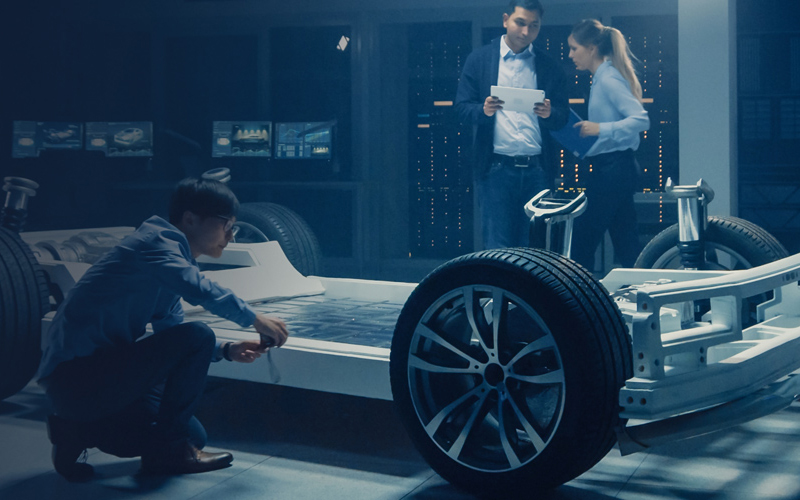“Discover the transformative impact of AI, ML, and Generative AI on the post-COVID-19 workplace. Explore how these technologies are reshaping remote work, fostering creativity, and enabling data-driven decision-making, ushering in a new era of adaptability and innovation.”
Introduction
In the wake of the COVID-19 pandemic, workplaces around the world have experienced a seismic shift. The future of work is no longer a distant concept; it is happening right before our eyes. In this transformative journey, technology has emerged as a paramount driving force. Artificial Intelligence (AI), Machine Learning (ML), and Generative AI have played pivotal roles in reshaping the post-pandemic workplace landscape. As we embark on a journey to unravel the profound influence of Artificial Intelligence (AI), Machine Learning (ML), and Generative AI in sculpting the post-COVID-19 work environment. These transformative technologies are not just passive observers; they are active catalysts, driving innovation, efficiency, and adaptability. From enhancing remote collaboration to revolutionizing decision-making processes, AI and its subsets are pivotal in shaping a workplace that is agile, resilient, and ready to tackle the challenges of a rapidly evolving world.
AI's Journey from Transforming Pandemic Response into a Workplace Revolution
AI's journey from transforming pandemic response into a workplace revolution has been nothing short of remarkable. As organizations adapted to the challenges posed by COVID-19, AI played a pivotal role in facilitating remote work, optimizing resource allocation, enhancing employee well-being, and augmenting decision-making processes.
1. Redefining Workforce Productivity
The pandemic accelerated the adoption of remote work, making digital collaboration tools indispensable. AI-powered virtual assistants like Microsoft's Cortana and Google's Assistant are now enhancing our work experience. These intelligent companions schedule meetings, transcribe conversations, and even offer suggestions based on our work patterns, thereby boosting productivity. For example - Slack, a popular collaboration platform, employs AI algorithms to recommend relevant messages and files to users, making remote teamwork more efficient.
2. Personalized Learning and Development
Amidst constant change, reskilling and upskilling have become crucial. Machine Learning algorithms can analyze an employee's skills and suggest personalized learning paths. This ensures that workers stay relevant in an ever-evolving job market. For example - IBM's AI-powered learning platform, Watson Assistant, offers personalized learning recommendations to employees, tailored to their roles and career goals.
3. Enhanced Employee Well-being
AI is not just about work efficiency; it is also about well-being. Generative AI, capable of producing human-like text, is being used to create mental health chatbots and virtual therapists. These AI-driven mental health allies are available 24/7, providing employees with immediate support. For example - Woebot, an AI chatbot, offers therapy and emotional support to employees, helping them manage stress, anxiety, and depression.
4. Smarter Recruitment and Onboarding
Finding the right talent in the post-COVID-19 era has become even more critical. AI streamlines the hiring process by analyzing resumes, identifying top candidates, and conducting initial interviews. Additionally, ML algorithms predict a candidate's likelihood of success in a specific role.
5. Predictive Workforce Management
Predictive analytics powered by AI and ML are being used to forecast workforce needs. This allows organizations to allocate resources effectively, optimize schedules, and reduce costs while ensuring that workloads remain manageable for employees.
6. Augmented Decision-Making
Generative AI can generate various scenarios, helping organizations make informed decisions. By analyzing vast datasets, these AI systems can provide executives with alternative strategies and outcomes, leading to better decisions.
7. Autonomous Processes
The post-COVID-19 workplace is embracing automation at an unprecedented rate. AI-driven robotic process automation (RPA) can perform repetitive tasks, allowing human workers to focus on creative and strategic endeavors.
8. Customer Experience Enhancement
AI's influence extends to customer interactions. Chatbots powered by AI can handle customer inquiries and provide personalized recommendations, enhancing the overall customer experience.
Unlocking the dynamic bond between Generative AI and Innovation
Generative AI, a specialized branch of artificial intelligence, has achieved remarkable advancements in elevating creative and innovative capabilities within the business environment. Leveraging neural networks, it generates various forms of content, including textual materials, imagery, and even musical compositions, thereby fueling productivity and ingenuity in corporate settings. Here's how generative AI is transforming creativity at work:
- Content Generation: Generative AI models can automatically generate high-quality written content, making it a valuable tool for content marketers and writers. These models can also assist with generating reports and summaries, saving time and effort.
- Design Assistance: Generative AI is aiding graphic designers by automating certain design processes. For instance, tools like Runway ML can generate visual elements and suggest design ideas, reducing the time required for design projects.
- Innovative Problem Solving: By feeding generative AI models with data related to specific challenges, organizations can stimulate creative problem-solving. These models can generate a wide range of ideas and solutions that human teams may not have considered.
AI-Enhanced Decision-Making Unveiled
The post-COVID-19 workplace demands agile and data-driven decision-making. AI and ML are instrumental in helping organizations process vast amounts of data to make informed choices.
- Predictive Analytics: AI and ML models can analyze historical data to predict future trends, customer behavior, and market shifts. This enables businesses to make proactive decisions and adjust their strategies accordingly.
- Supply Chain Optimization: The pandemic exposed vulnerabilities in global supply chains. AI-driven supply chain management tools can optimize inventory levels, predict disruptions, and enhance efficiency in the supply chain.
- Risk Management: AI can assist in risk assessment and management by analyzing numerous factors, such as economic conditions and geopolitical events, to identify potential risks to the organization.
Conclusion: Paving the Way Forward
As we navigate the ever-evolving post-COVID-19 workplace, AI, ML, and Generative AI are our steadfast companions. These technologies are not merely tools; they are transformative forces shaping the future of work. The examples we have explored from various industries demonstrate that AI is not a distant dream; it is the driving force propelling us toward a more efficient, adaptable, and innovative future. To stay competitive and resilient, businesses must embrace AI technologies and leverage their potential to reshape the way we work and thrive in this new era.




